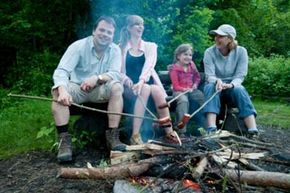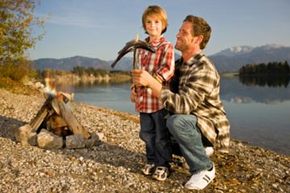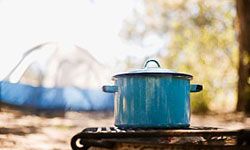When you think of "freeze-dried" foods, something about those two words doesn't initially sit well with your palate. That's because you immediately think of the unappetizing foods that soldiers and astronauts eat while on the battlefield and in space. Freeze-dried foods are great in those settings because they're lighter and have less chance of spoiling. So it makes perfect sense that campers would like freeze-dried foods for those same reasons. But they also taste better than you'd think.
So what exactly is freeze-drying or lyophilization as it's formally known? This is a process "that allows food to be shelf stable while retaining the maximum amount of nutrients" [source: Shelf Reliance]. Both fresh and cooked foods can be freeze-dried so the kids will be happy to know that they can bring the family's favorite macaroni and cheese recipe with them on the trip. Cooked freeze dried eggs are great for breakfasts while freeze-dried fruit like apples, pineapples and raisins make great snacks. You don't lose taste and texture with this method.
Some campers opt to purchase freeze-dried brands for convenience, while others go for freeze-drying their own food. More campers prefer the option of purchasing pre-packaged food online and from places like sporting good stores. But, if you do choose to dry your own food, know that it's a costly and a time-consuming process. Freeze-drying machines are not cheap and can run up into the thousands of dollars. They can be purchased from places that sell equipment to restaurants.
So if you opt to freeze-dry your own food, here's how you do it: First, place the fresh or cooked food in a freeze-drying machine which will freeze the food. After it's frozen, the vacuum chamber in the machine will vaporize the ice and water at a temperature below 50 degrees Fahrenheit (10 degrees Celsius). About 98 percent of the food's moisture will be taken out by evaporating the ice. Look to finish this process in several hours to days to make sure the food is dry to prevent spoiling.
Next, seal the food in packaging that prevents moisture and oxygen from getting inside. A Ziploc bag will work just fine. The food will stay fresh until you open it again [source:Wild Backpacker]. When everyone's ready to eat the beef stroganoff around the campfire, simply add it to a pot of boiling water. The food will keep its original color, form, size, taste and texture. On our next page, we'll talk about another method to prepare food for camping.



